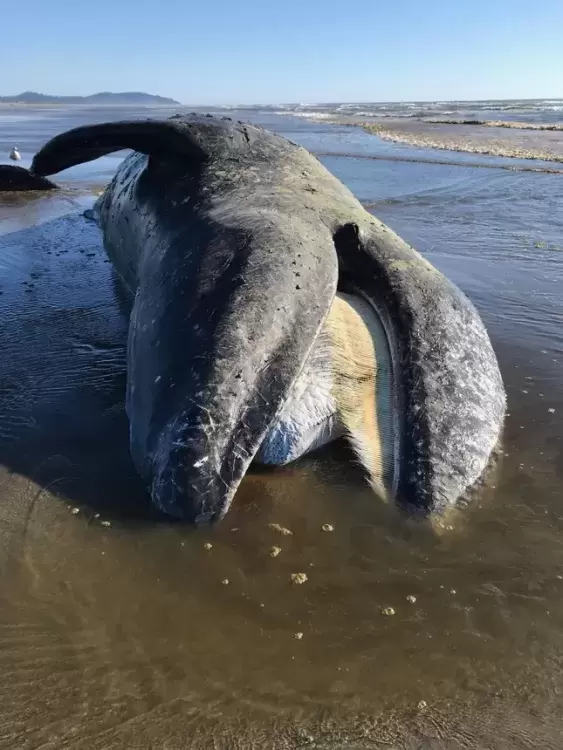Dead grey whales washing ashore along the Pacific coast are a small fraction of the overall mortality only halfway into the cetacean’s migration to Alaskan waters.
That means mariners and others who frequent the coast should keep an eye out as scientists work to establish a clear cause for the die-off. The public can report sightings of dead or stranded whales to DFO’s Marine Mammal Hotline at 1-800-465-4336.
Whales tend to sink when they die. The 75 deaths that have been reported so far this spring represent only about 10 percent of overall mortality among the eastern North Pacific greys. But in a typical year, 15 deaths would have been reported at this stage.
“Certainly, the vast majority go unreported,” said John Calambokidis, a U.S. research biologist, during a media teleconference with officials on both sides of the Canada-U.S. border.
U.S. marine mammal experts hosted the discussion to spread word on their latest response, declaring an Unusual Mortality Event (UME). This is only the second time that the National Oceanic and Atmospheric Administration has place grey whales in that category. They haven’t seen this much mortality in the grey population in almost 20 years.
Five greys have turned up so far on B.C. beaches and more are expected. The UME designation demands an immediate response from agencies, bringing in additional resources and expertise to bear.
Deb Fauquier, a veterinary medical officer, said the die-off could be caused by environmental, disease or human-related factors such as vessel strikes.
“We know many of the whales are skinny and malnourished and that suggests they may not have got enough to eat during their stay in Alaska,” said Michael Milstein, NOAA Fisheries West Coast Region.
A prominent theory holds that a lack of sea ice in Alaskan waters has hindered production of amphipods, ocean-floor life that greys feed upon as they build fat reserves for their long seasonal migration. As sea ice melts, it drops organic matter, enriching the sea floor’s benthic zone.
The last major die-off of greys 20 years ago occurred in the aftermath of an El Nino, a climate phenomenon that results in warmer ocean temperatures and reduced sea ice.
While the grey population is estimated to be a robust 27,000, that itself may be a factor, increasing competition for food, some have suggested. The population may have reached carrying capacity or there may be multiple related causes.
“We are seeing lots of live grey whales trying to feed, bringing them into areas where in greater contact with threats such as ship strikes,” Calambokidis said. “All of that brings animals into greater contact with ship strikes as well with fishing activities.
“We are concerned,” said David Weller, research biologist. “We’ve been following whales since 1995 and even before then, trying to find out how a population of whales is able to grow and thrive.”
They expect that necropsy results will shed additional light on the causes. A preliminary assessment indicates calf production will be “very low” this year, a further risk.
“From population level, we know they’re capable of rebounding from a loss in order of 6,000 (as with the previous UME in 1999-2000), so we know that it can recover given that all the parameters remain the same,” Weller said. “We’ve got our finger on the pulse and I would say we want to monitor it closely.”
Carrying capacity is not necessarily a hard ceiling but more of a shifting threshold that can vary from year to year, Weller noted.







